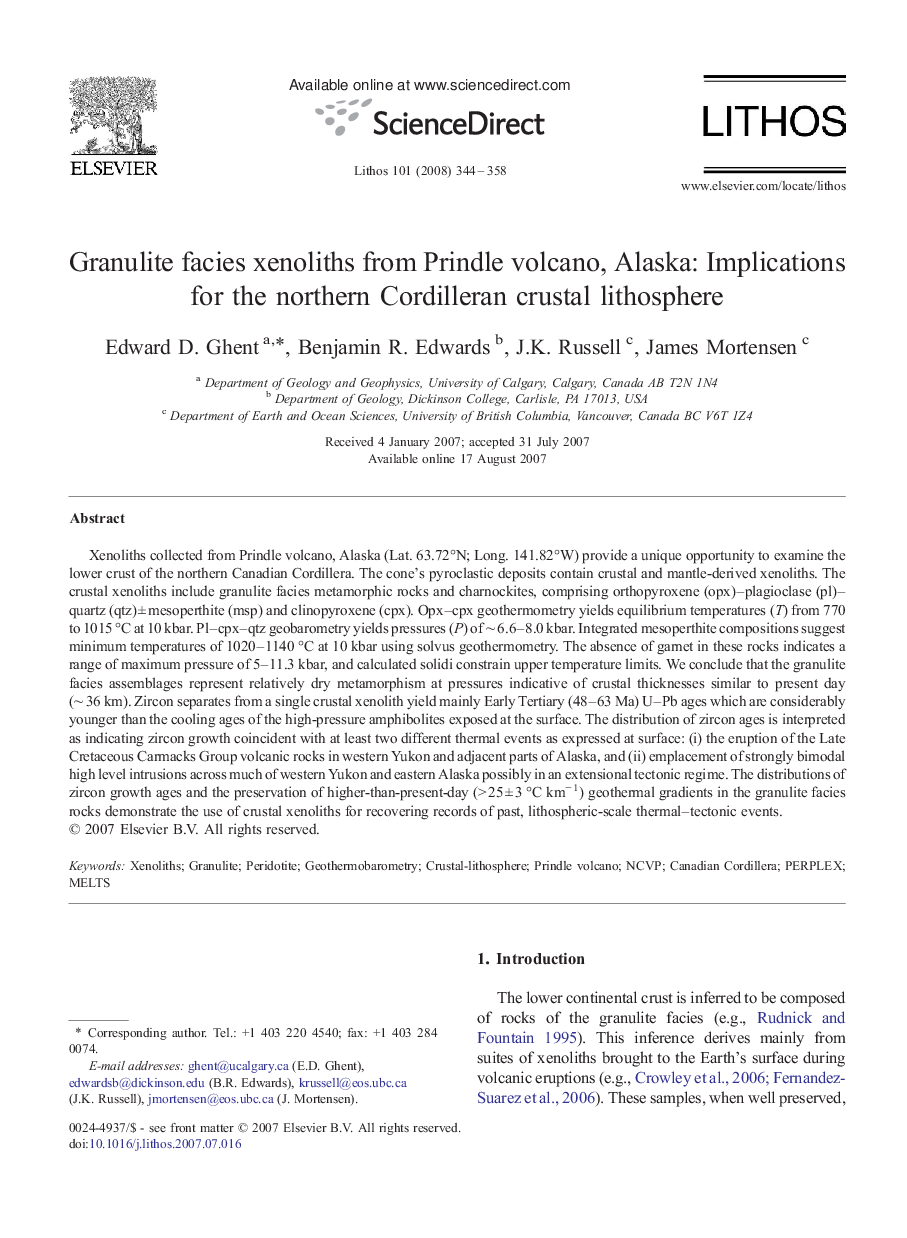| Article ID | Journal | Published Year | Pages | File Type |
|---|---|---|---|---|
| 4717633 | Lithos | 2008 | 15 Pages |
Xenoliths collected from Prindle volcano, Alaska (Lat. 63.72°N; Long. 141.82°W) provide a unique opportunity to examine the lower crust of the northern Canadian Cordillera. The cone's pyroclastic deposits contain crustal and mantle-derived xenoliths. The crustal xenoliths include granulite facies metamorphic rocks and charnockites, comprising orthopyroxene (opx)–plagioclase (pl)–quartz (qtz) ± mesoperthite (msp) and clinopyroxene (cpx). Opx–cpx geothermometry yields equilibrium temperatures (T) from 770 to 1015 °C at 10 kbar. Pl–cpx–qtz geobarometry yields pressures (P) of ∼ 6.6–8.0 kbar. Integrated mesoperthite compositions suggest minimum temperatures of 1020–1140 °C at 10 kbar using solvus geothermometry. The absence of garnet in these rocks indicates a range of maximum pressure of 5–11.3 kbar, and calculated solidi constrain upper temperature limits. We conclude that the granulite facies assemblages represent relatively dry metamorphism at pressures indicative of crustal thicknesses similar to present day (∼ 36 km). Zircon separates from a single crustal xenolith yield mainly Early Tertiary (48–63 Ma) U–Pb ages which are considerably younger than the cooling ages of the high-pressure amphibolites exposed at the surface. The distribution of zircon ages is interpreted as indicating zircon growth coincident with at least two different thermal events as expressed at surface: (i) the eruption of the Late Cretaceous Carmacks Group volcanic rocks in western Yukon and adjacent parts of Alaska, and (ii) emplacement of strongly bimodal high level intrusions across much of western Yukon and eastern Alaska possibly in an extensional tectonic regime. The distributions of zircon growth ages and the preservation of higher-than-present-day (> 25 ± 3 °C km− 1) geothermal gradients in the granulite facies rocks demonstrate the use of crustal xenoliths for recovering records of past, lithospheric-scale thermal–tectonic events.
